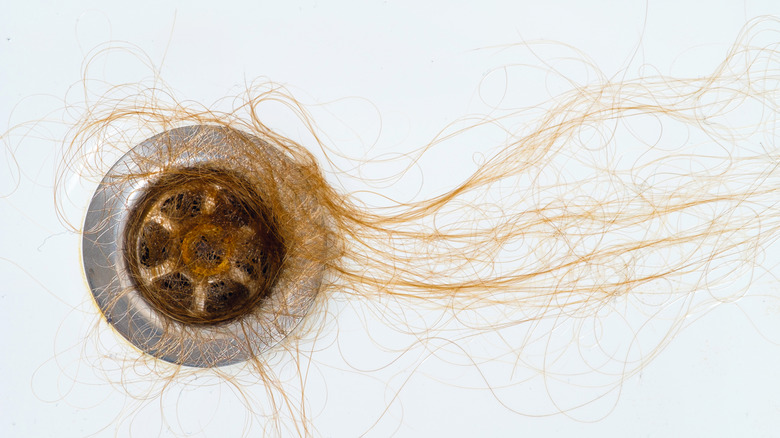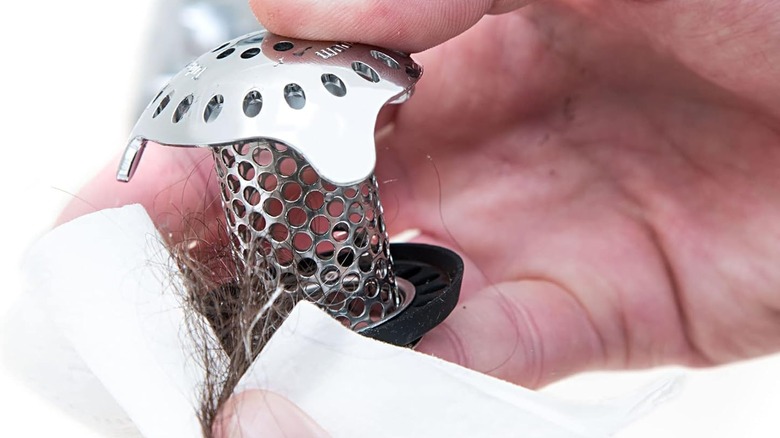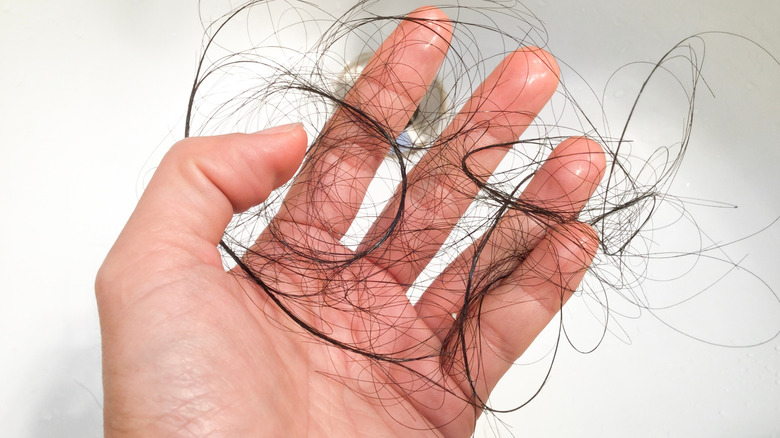Prevent Hair From Clogging Shower Drains With Hair Catchers And More
We may receive a commission on purchases made from links.
Unclogging a shower drain is super fun — said no one ever. Unfortunately, it can be a frequent necessity with how often people let things go down the drain that really shouldn't. The primary culprit? Hair. By choosing the best hair catcher for your needs, emptying it regularly, and cleaning your shower drain often, you can avoid ever reaching for the drain snake again.
The problem with hair is that it's thin enough to easily flow down the drain yet eventually adds up and cannot be dissolved easily by cleaners. Plus, it's never just hair strands by themselves. They get tangled up with the remnants of shampoo, conditioner, soap, shaving cream, body oils, and any other products used in the shower. That accumulation creates a solid mass. This can result in slow-draining water, a total lack of drainage, or mold growth, not to mention making your shower drain smell like sewage. Even shorter hairs from shaving can cause an issue. And while you can fix many clogs yourself, more severe issues will require calling a plumber, who will typically charge you an hourly rate.
Most shower drains have holes that are nowhere near small enough to block your average hair clump. Buying a hair catcher is an essential step to avoiding clogs, but the right type for you will vary based on your preferences, showering habits, and drain compatibility.
Every type of hair catcher explained
Among the various types of hair catchers are mesh screens. These are ideal for laying right on top of flat floor drains and have tiny holes for catching hairs of all sizes. Some brands come with adhesive and are disposable, but you can also buy a regular mesh screen at a hardware store and attach it to the top of the drain yourself. The downside is that fine mesh can be difficult to clean if it gets gunky. Silicone screens or stainless steel screens are easier-to-clean, reusable options for flat drains.
Then there are strainers. Some, like the OXO Good Grips Drain Protector, are shaped like upside-down baskets that sit over the drain. They can cover any opening as long as they're large enough. Others, such as the TubShroom Ultra, are shaped like a basket (or mushroom) and go into the drain itself. The latter are less versatile, so it's important to check compatibility before you buy. The TubShroom is only designed for standard 1.5-inch-diameter drains, for example. Strainers are usually made of either stainless steel or silicone and are reusable unless they get too gross to clean.
Lastly, there are wall hair catchers. These are a bit different in that you have to deposit the hair in them. For people who tend to put their hair on the side of the shower somewhere, these are an effective alternative. They adhere to the shower wall and feature "grabbers" that collect strands. Examples include the Hair Shroom and the Porcupine Shower Wall Hair Catcher.
Other ways to prevent hair clogs
Just buying a hair catcher isn't enough to prevent shower drain clogs. Cleaning the hair catcher regularly is key to its effectiveness; depending on the type of catcher, that may mean as often as every use. Remove the collected hair and give it a rinse. (This is also much easier than trying to scrub away weeks-old shampoo residue.)
If possible, it's also helpful to brush your hair before you get in the shower. That won't eliminate stray hairs entirely but can significantly reduce them. Gather any loose hair that you see, rather than letting it flow down the drain and hoping for the best. Avoid very oily products, like certain hair conditioners, masks, or body oils. These are troublesome for drains in the first place, and when they combine with hair strands they're sure to turn into solid gunk.
Lastly, regular cleaning can help prevent buildup. Rinse the drain weekly with boiling hot water, taking care to avoid hitting the shower fixtures to avoid damage. Dismantle and clean the top of the drain itself monthly if possible. If you do find yourself needing to unclog your drain, try natural products like vinegar, salt water, and baking soda first before resorting to harsher chemicals. The stronger the product (and the more frequently used), the more risk to your pipes, so this should be a last resort.


